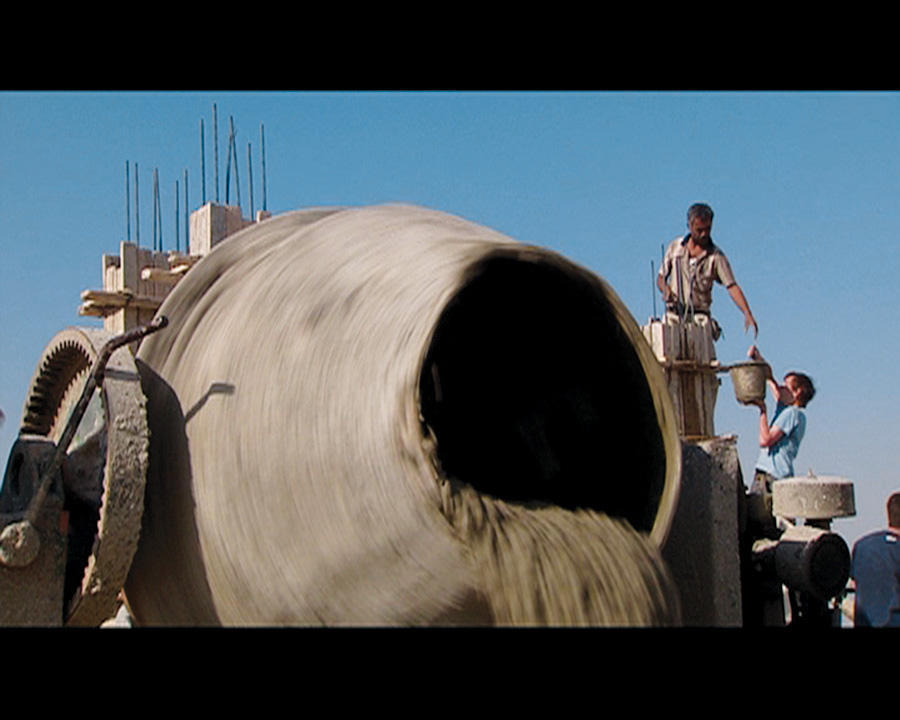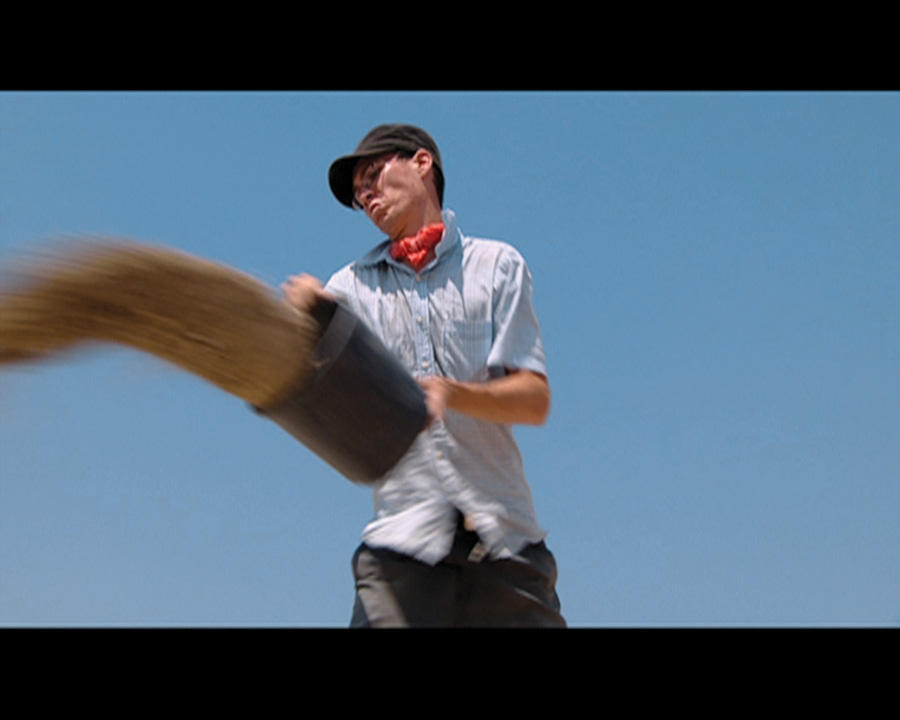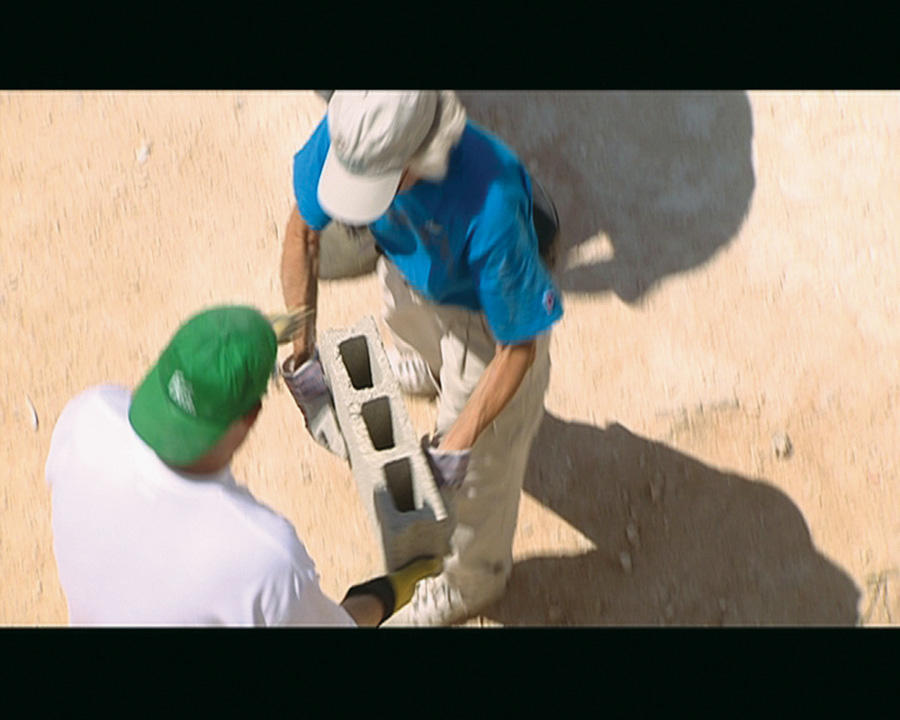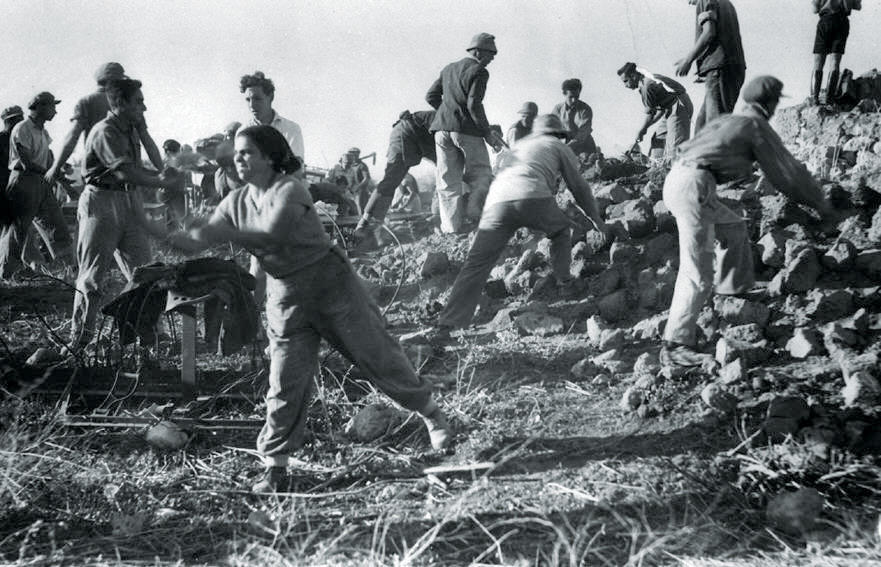
Yael Bartana has described herself as an amateur anthropologist. In works such as the brilliant, frightening Kings of the Hill (2003) and Wild Seeds (2005), the artist has documented both the deleterious and the cathartic aspects of group activity. In Kings of the Hill, Bartana filmed a barren site outside Tel Aviv, where brawny men entertain themselves by revving their ATVs up the hillsides. Wild Seeds showed a group of teenagers in the Occupied Territories playing a made-up game called “The Evacuation of Gilad’s Colony” (the objectives of which are self-explanatory). The artist has also engaged the ritualistic quality of collective activity: in Trembling Time, which observes the moment of remembrance on Israel’s Day of the Fallen Soldier, cars come to a sudden stop on a busy motorway and drivers step out, as if in a trance; it’s at once eerie and beautiful.

Bartana’s new video installation, Summer Camp, feels like something of a departure, in that it depicts a collective act of resistance as opposed to compliance — and one likely doomed to failure, at that. Summer Camp documents the activities of the Israeli Committee Against House Demolitions (ICAHD), a nongovernmental organization dedicated to rebuilding Palestinian homes in the Occupied Territories. The Israeli artist filmed ICAHD’s volunteers in the summer of 2006, in the West Bank town of Anata, as they worked on the house of one Abu Ahmad Al Hadad. His home had been torn down by the authorities in June 2004, and at the film’s start, the site is little more than rubble punctuated by torn concrete reinforcements that twist jaggedly out of the dust.

ICAHD’s volunteers, a motley international, intergenerational crew, many wearing green baseball hats, form a production line and, assisted by Palestinian builders, begin their work. The film — at least in its current draft version — ends with an exterior view of the completed house, a rudimentary one-story building that looks out across the hills of the West Bank. Call it Extreme Makeover, Israeli-style.
So far, so dull — or at least, not so different from dozens of well-intentioned EU-sponsored “development films” that document, brick by sundered brick, the work of the Caterpiller D9, the IDF’s bulldozer of choice. But Bartana has bigger fish to fry.

The orthodox anthropologist must remain apart from the group, even as she becomes immersed in its activities; Bartana has set out to ensure that the viewer not feel any sense of belonging while engaging with her works. “I am interested in shifting the viewer into the role of outsider; whatever the image’s subject might be, it still remains distinctly alien and allows examination and reflection on the event.”
This quasi-Brechtian approach is emphasized by Summer Camp’s planned installation in a wooden hut that borrows from the aesthetics of 1930s cinemas. As Bartana describes it, it is shaped like a long tunnel and “looks a bit like a garmoshka, an old-style camera.” The tunnel is intended to direct the gaze of the viewer, “in the same way that propaganda films are made to influence your mental and ideological awareness.”
But the film itself is plenty estranging. The soundtrack features music from Zionist propaganda films of the 1930s, such as Helmar Lerski’s 1935 film Awodah (sweeping melodies courtesy of the Budapest Symphony Orchestra), and footage from those old Zionist films is interspersed with the contemporary footage of ICAHD in action. In Awodah, muscled workers drill for water. The camera cuts from farmers and children harvesting corn, to bricks being laid and a house being built in Tel Aviv. The Star of David is erected on the roof frame. In quoting the old films, Bartana, in her own words, shows “the resemblance of the ideological and visual relationship between building as a form of resistance against the Occupation and building as nation-building of Israel by the Zionist movement.” Thus ICAHD’s earnest volunteers mimic a production line of happy Jewish settlers picking oranges or laying bricks, and in both old and new footage, rural elements lightly disrupt the promise of an unadulterated new world: skinny livestock and boys on donkeys plod past tractors, irrigation pumps, and unsightly concrete mixers.

Summer Camp also takes on less obvious parallels with its Pathé-era predecessors. Just as it is possible to detect an element of melancholy even in some of the most triumphalist Zionist films — admittedly, this effect is augmented by benefit of hindsight — there is an element of uncertainty here, too. Abu Ahmad is aware that his new home may not survive for long, and that it may be demolished again by the Jewish municipality. In the penultimate shot, the camera looks through the window at Abu Ahmad’s family moving about their new home, until someone inside draws the curtain.